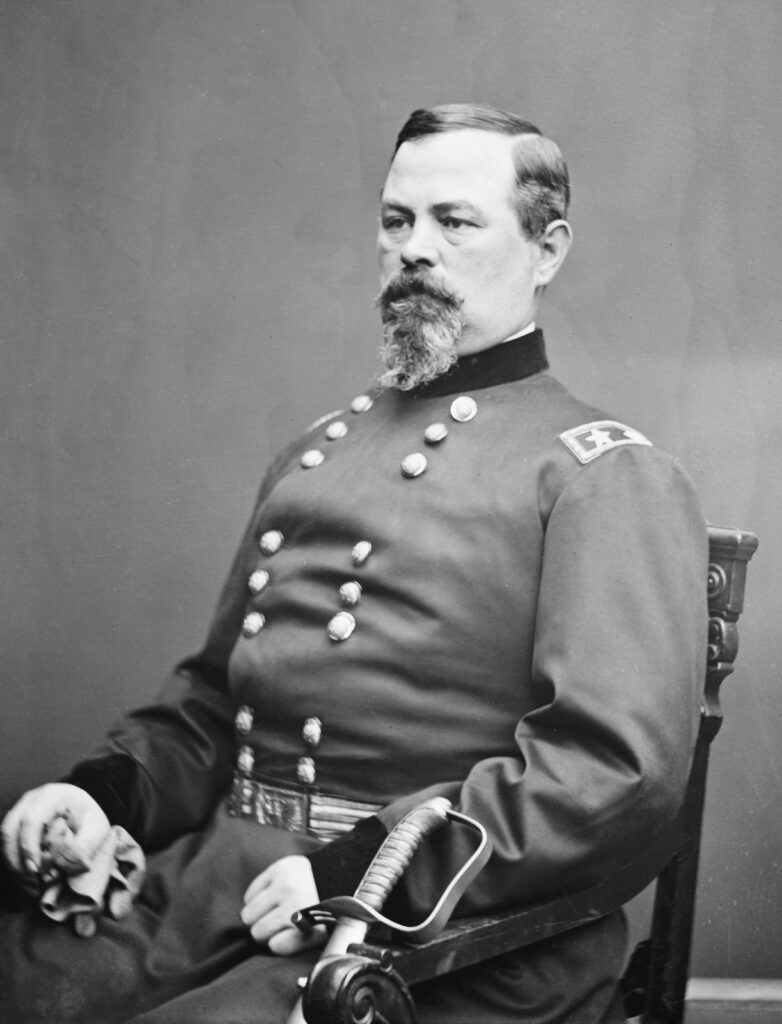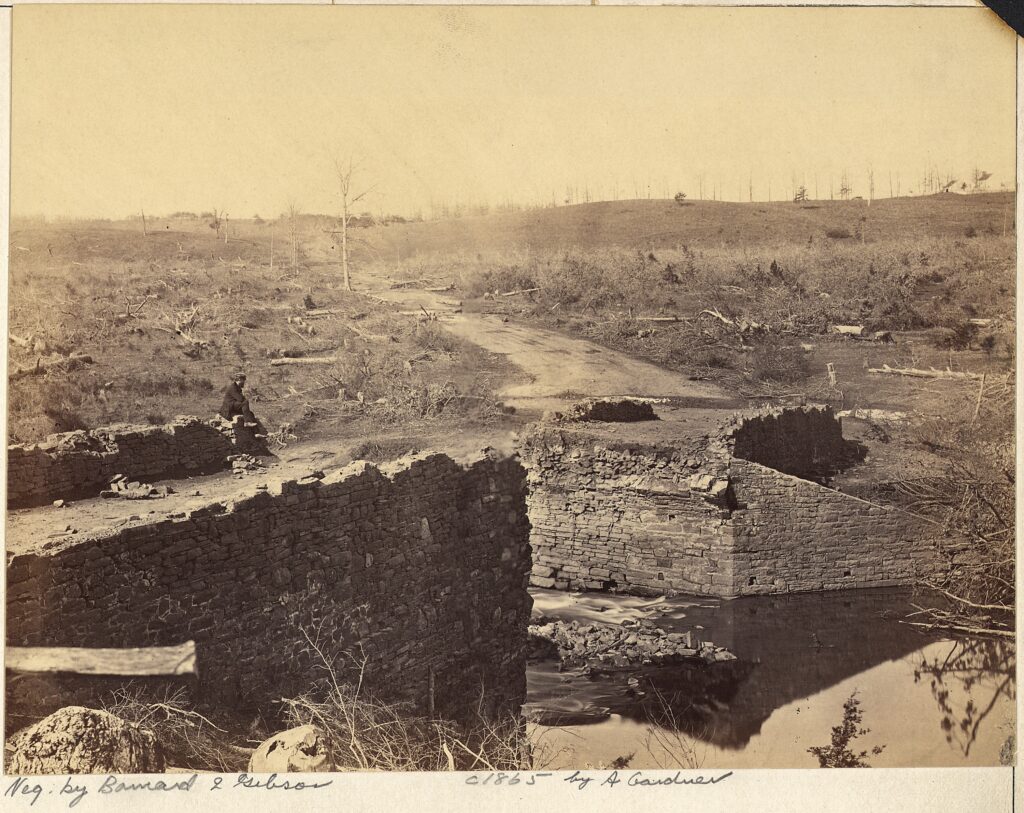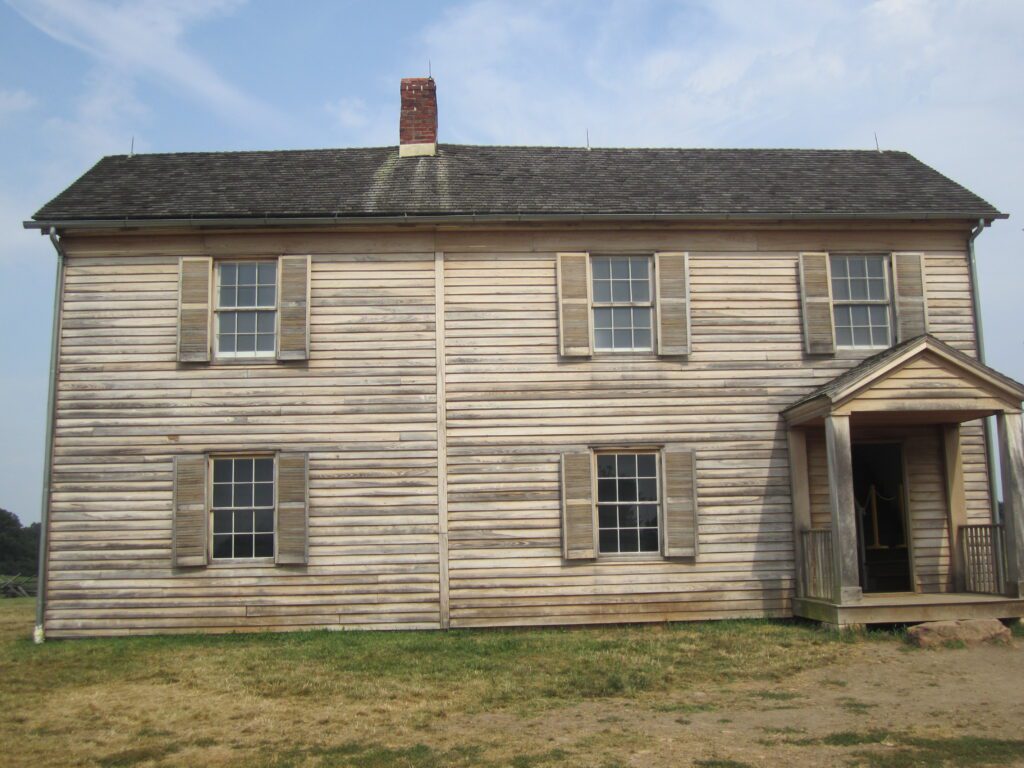The American Civil War was marked by several critical battles, but The First Battle of Manassas, also known as the First Battle of Bull Run, holds a special place as the first major land battle of the war.
Fought on July 21, 1861, this battle was not only a clash of arms but also a clash of expectations, aspirations, and emerging military strategies. In this blog, we closely examine this iconic battle, its background, its unfolding, and the battle’s consequences that rippled through both the Union and the Confederacy.
While you’re with us, please be sure to check out our Civil War Battlefield Tours in Virginia. There’s no better way to immerse yourself in history than by visiting fascinating historical sites in the company of expert guides.

Background Information
Location: Manassas Junction, Virginia
Manassas Junction was a strategic railroad crossing in northern Virginia. Situated about 25 miles southwest of Washington, D.C., the location was significant because of its junction of the Orange and Alexandria Railroad with the Manassas Gap Railroad. This made it a vital logistics point for any force operating in northern Virginia.
Date: July 21, 1861
The battle took place on July 21, 1861. The months leading up to this had seen tensions rise to a breaking point, with the Confederacy being formally established and several states seceding from the Union. By the time armies converged near the quiet town of Manassas, the Civil War had begun in earnest.

Union Brig. Gen. Irvin McDowell
Commanders: Brig. Gen. Irvin McDowell (Union) vs. Gen. Pierre G.T. Beauregard and Gen. Joseph E. Johnston (Confederacy)
Brigadier General Irvin McDowell was given command of the Union Army of Northeastern Virginia. Despite his reservations about the readiness of his troops, political pressures demanded swift action.
On the Confederate side, General Pierre Gustave Toutant Beauregard commanded the forces at Manassas. He was soon joined by General Joseph E. Johnston, who used the railroads to bring his troops from the Shenandoah Valley.
The Strategic Importance of Manassas Junction
For the Union, a swift victory at Manassas was a way to demonstrate the federal government’s ability to preserve the Union and potentially bring a quick end to the rebellion. For the Confederacy, holding Manassas was critical to protect Richmond, the Confederate capital, from Union advances and to maintain control over the vital railroads that passed through the junction.
Prelude to the Battle of First Manassas
Confederate and Union Military Strategy in Virginia
Virginia was a focal point for the Union and the Confederacy in the early stages of the Civil War. The Union aimed to make swift advances into Confederate territory, while the Confederacy sought to defend its capital, Richmond, and maintain control over key transportation routes.
Troop Movements and Dispositions Before the Battle
The Union Army, under Brig. Gen. Irvin McDowell started moving towards Manassas Junction from Washington, D.C., with about 35,000 men. McDowell planned to use his numerical advantage to flank the Confederate forces. The Confederate Army, initially positioned along Bull Run River, had about 22,000 men under the command of Gen. P.G.T. Beauregard.
The Union’s Objectives for the Campaign
The Union hoped to achieve a decisive victory by capturing Manassas Junction and advancing to Richmond. This was seen as a way to quell the rebellion swiftly and reassert control over the seceded states. The government and public in the North were pushing for a quick campaign, famously under the belief that the war would be over in 90 days.
The Battle Unfolds
Initial Engagements
On the morning of July 21, 1861, the Union forces initiated the battle with an attack on the Confederate left flank. McDowell had managed to deceive Beauregard into believing that the main assault would be directly on his lines along Bull Run, while the actual plan was to envelop the Confederate left.
Key Moments and Turning Points in the Battle of First Manassas
Confederate Defensive Lines: The Confederates put up fierce resistance. They were bolstered by the arrival of reinforcements under Gen. Joseph E. Johnston, who came via the Manassas Gap Railroad.
Union Assaults: Union forces made progress against the Confederate left, but the attack was slowed by the inexperienced soldiers’ disorganization and the rough terrain.
Arrival of Confederate Reinforcements: The tide turned when additional Confederate brigades, including those commanded by Brig. Gen. Thomas J. Jackson reinforced the lines. It was here that Jackson earned his famous nickname, “Stonewall.”
Tactics and Battlefield Maneuvers
Both sides employed classic Napoleonic tactics, with infantry lines and artillery support. The Union forces attempted to utilize their numerical superiority for flanking maneuvers. At the same time, the Confederates sought to exploit the terrain and interior lines of communication to concentrate their forces at critical points.
End of the Battle: The Union Retreat
By the afternoon, the Confederate forces had stabilized their lines and launched a counteroffensive. The Union troops began to fall back, and what started as an orderly retreat soon turned into a chaotic rout. The Confederates did not pursue aggressively, which allowed the majority of the Union forces to escape.
In the aftermath of the battle, both sides realized that the war would not be as short or straightforward as they had believed. The First Battle of Manassas exposed the need for more disciplined troops, better logistics, and more sophisticated strategies.

Devastation Caused by the Battle
The Aftermath
Analysis of Casualties and Losses
The First Battle of Manassas was a bloody introduction to the Civil War, with the Union forces suffering around 2,708 casualties and the Confederates around 1,982. These numbers were alarming at the time, as the general public on both sides was unprepared for the level of bloodshed this war would entail.
The Immediate Impact on Both Sides
For the Union, the defeat was a wake-up call. It shattered the illusion of a quick and decisive victory and highlighted the need for better training and preparation. The Confederate victory bolstered Southern morale and confidence but also contributed to overconfidence and the belief that sheer fighting spirit would secure their independence.

Ruins of Judith Henry’s House Following the Battle
Reevaluation of Military Strategies by the Union and the Confederacy
The Union, recognizing the need for a more comprehensive military strategy, began organizing a larger, better-trained army, which led to the appointment of Maj. Gen. George B. McClellan commanded the Army of the Potomac. The Confederacy, buoyed by victory, did not immediately pursue significant reforms or changes in strategy, partly due to overconfidence.
Public Perception and Political Response
The defeat shocked and dismayed the Northern public, leading to greater determination and resolve for a prolonged conflict. In the South, the victory was celebrated, but it also contributed to a sense of complacency. The battle also had international implications, as European powers watched closely to gauge the strength and resolve of both sides.
Reflections on the Ground: Visiting the Manassas Battlefield
Sites of Interest Within the Battlefield Today
Visitors to the Manassas National Battlefield Park can explore key sites such as Henry Hill, where Stonewall Jackson earned his nickname, and the Stone Bridge over Bull Run, a critical crossing point during the battle.
Monuments and Markers
The battlefield is dotted with monuments and markers that commemorate the units that fought in the battle and the significant events that occurred during the engagement.
Understanding the Battlefield Layout and Troop Movements Through the Landscape
Walking the grounds of the battlefield allows for a tangible connection to history. Visitors can understand the terrain and how it influenced troop movements and combat.
The Significance of Battlefield Preservation
Preserving these historical sites is crucial for educating future generations. It’s a tribute to the men who fought and an important reminder of the costs and complexities of war.

(Judith Henry’s House Today – Source / License)
Visit Virginia’s American Civil War Battlefields
The First Battle of Manassas began a long and grueling conflict that would shape the United States right to the present day. With its dramatic turns and profound implications, the battle holds invaluable lessons in military strategy, the human costs of war, and the unpredictable nature of armed conflict.
By visiting the battlefield, one not only steps back in time but also engages with history personally and meaningfully. As we reflect on this pivotal moment in American history, the ground at Manassas continues to resonate.
To visit key Civil War battlefields with expert historical guides, please consider joining us on one of our Private Tours of Virginia’s Civil War Battlefields.
If you have any questions, please get in touch.
Continue reading about US Civil War history with Battlefield Tours of Virginia. Read our blog on Who Won the Civil War and Why?


